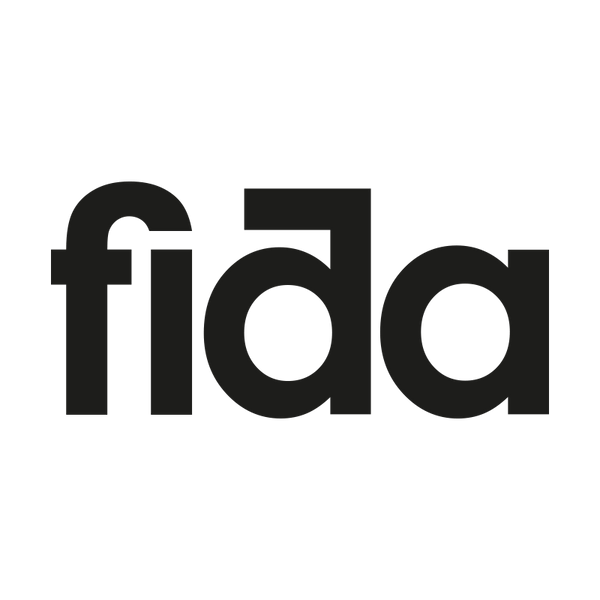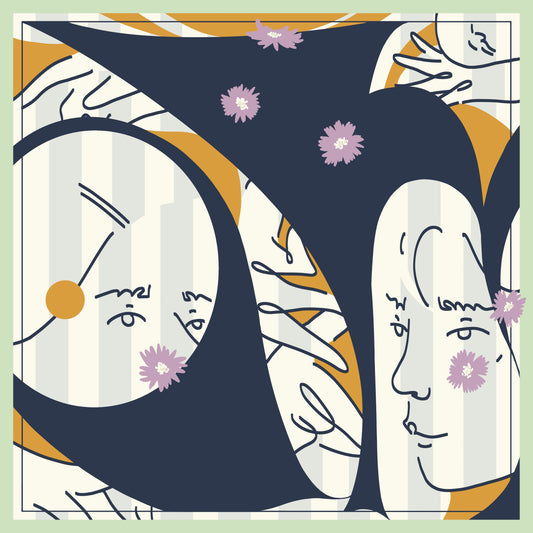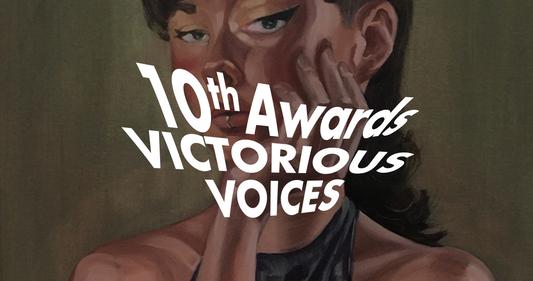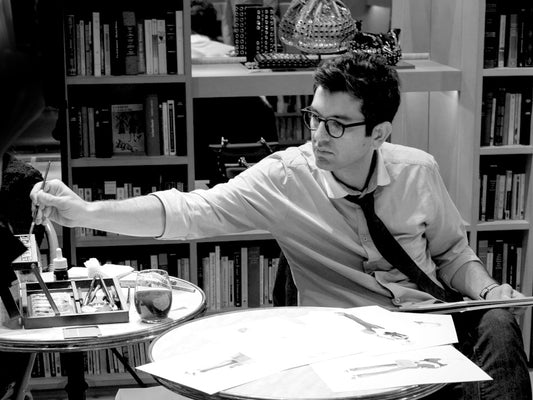
'Tomorrow Will Bring the New NOW' With Benedikt von Harder
Share
Benedikt von Harder's work explores diverse subjects, from reflective cars that capture cultural nuances to seemingly naive drawings that hold deeper meaning. Influenced by a blend of technical precision and childlike expression, his journey is shaped by a relentless pursuit of complexity, always with culture at its core.

How would you describe yourself as an artist, and what qualities or values do you aim to bring into your work?
I am a Visualist. My aim is to culturise the seen. I walk through my environment with my eyes open and try to translate the NOW into my chosen mediums, mainly pencils on paper and acrylic on canvas. My drawings in Din A5 mostly run under the title "Ordinary Portrait Series." I love it when everything appears a bit naive at first glance, but there is much more in my works than that. My vision is to bring maximum possible power into small-scale mediums. I want to someday stand alongside a large Alex Katz or David Hockney painting.

Your artwork often showcases a dynamic range of subjects. What draws you most to a particular subject, and is there one you find yourself returning to repeatedly?
I love cars with attitude and how culture and urban architecture reflect in their paint. At first, the cars may seem like the main subject, but they become a canvas for a second layer, reflecting the NOW in dialogue with a stylish, functional object. Cars represent attitude and certain social concepts of an era through their designs, while also showcasing their individual soul, which can dramatically change their look. Whether it's a polished old Bentley or a trashed Renault Twingo, if they have rock 'n' roll, I am interested.

You work across various mediums—do you have a favourite, and how does your choice of medium influence the creative process and final piece?
From the beginning, I've had a thing for Din A5 paper formats. My visual vision aims to translate the power of objects and portraits onto small formats. Even if the size seems small, I believe the works are very powerful when they hang in a collection, room, or exhibition. Small doesn’t mean shy and weak.

Who or what are some of the biggest influences on your style and subject matter? Are there specific experiences or moments that have shaped your artistic journey?
Style-wise, I like everything that has silly and almost childish paint or pencil lines but is technically and colourfully perfect to my eye. Early on, I painted in a very childish style, with subjects like Pimp Mercedes, adult excess, and superstars, which looked like they came from a young boy's perspective. Since 2020, when I drew my first "silly" portrait on Din A5, I have consistently focused on the same objects, personas, and formats, which has shaped my journey immensely. My goal is to get more complex, with culture as my engine.

What do you wish more people knew about you as an artist or the creative process behind your work?
I take what I do very seriously. I continue to produce even when there is no constant demand, clients, or a solid market.
How has your work evolved over the years, and is there a piece that marks a turning point in your artistic development?
I started with a childish drawing style and became more detailed and time-consuming each year. I still use the same cheap, soft paper I started with, which has no mercy on mistakes. I mix it with high-end pencils from brands like Faber-Castell and Caran d'Ache. In 2020, I would spend about 10 minutes on a portrait, but now it can take up to 6 hours. I love this "fight" with the paper.

If you could collaborate with any artist, brand, or creative entity, who would it be and why? What kind of project would you envision for that partnership?
I would love to blow up my small formats onto huge billboards, ideally on Sunset Boulevard in Los Angeles or Piccadilly Circus in London. I don’t believe my works are in their final stage. They could be printed on billboards, mass-printed in newspapers, or projected onto buildings. A collaboration with LOEWE under JW Anderson would be amazing, or even with Jürgen Teller or a magazine like Die Zeit Magazin or Fantastic Men.

What has been the most challenging aspect of your artistic journey, and how have you overcome it?
Visibility and getting recognised as a serious visual artist in the art market by curators, galleries, visual publishers, and collectors. It always takes supporters to get out there.

Do you aim to tell a particular story or convey a specific emotion in your work, or do you prefer to leave it open for interpretation?
Small images, big personal stories. If I start talking about it, I won’t stop.
Are there any subjects or themes you haven’t explored yet that you’d love to dive into in the future?
Tomorrow will bring the new NOW.
See more of Benedikt von Harder:
Instagram: https://www.instagram.com/benedikt_1983/
Website: www.benediktvonharder.com







